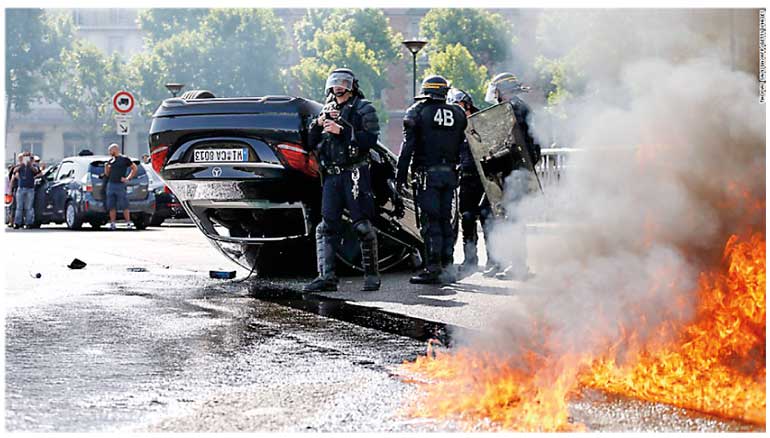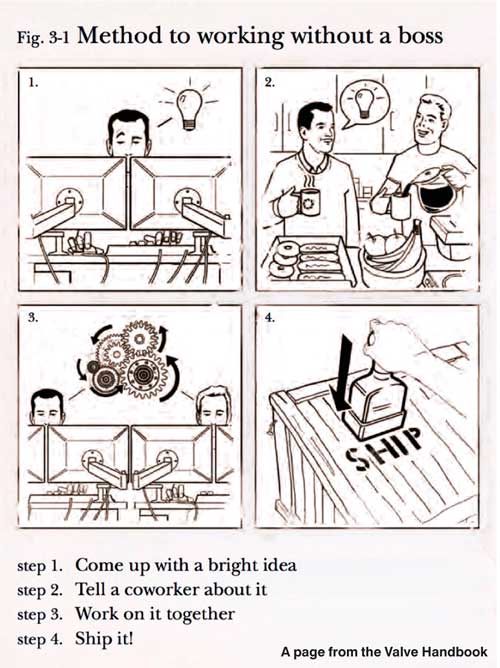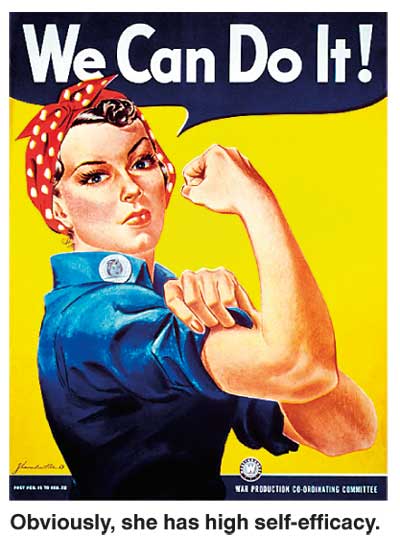Wednesday Mar 05, 2025
Wednesday Mar 05, 2025
Tuesday, 15 September 2015 00:01 - - {{hitsCtrl.values.hits}}
By Prabhath Sirisena
http://vesess.com: One day in Paris, when things were going horribly wrong, Jean-Elie came to my rescue.
I had got down from the metro at the Mairie de Montrouge terminus, south of the city. I had a critical meeting to attend, and plenty of time to get there. However, there were no taxis outside the station as there were supposed to be.
I waited patiently at the taxi stand. Then I walked down the street to another taxi stand. I asked people and policemen what was happening; they were clueless. Finally a taxi came, but it didn’t stop for me. So I walked back to the bus stop near the station to figure out if that would be an option. But everything there was in French, which I don’t understand, and there was no map. And while I was there, another taxi went by without stopping.
I was running out of time. Then I realised—of course!—that there was still one option left. I fired up the Uber app on my phone and requested an uberPOP taxi. Just as I got a glimpse of the confirmation, my phone died.
As I was sitting there on a sidewalk at Montrouge, wondering if I was going to end up letting down the Vesess team after coming all the way here, Jean-Elie rolled up in his black Volkswagen. I couldn’t have asked for a better driver for my first Uber ride, and a classier brand ambassador for Uber, than that laid-back guy.
Babbling about Uber was the first thing I did at the meeting. It was the perfect ice breaker: the people I was meeting with were even bigger fans of Uber.

Fighting Uber
Just a few weeks later, French taxi drivers blocked roads to airports and train stations in Paris, as part of a nationwide protest against Uber. Protestors burned tires and turned over cars along major thoroughfares. Some of Paris’s busiest roads turned to chaos.
There’s no love lost between French taxi unions and Uber. Their low-cost service uberPOP in particular, which relies on a network of non-professional drivers like Jean-Elie, has been quite controversial. Responding to the protests, the Paris prosecutor’s office ordered Uber France and two of the company’s top executives in Europe to stand trial on charges that included “misleading commercial practices” and “complicity in the illegal exercise of the taxi profession”.
On 3 July, Uber suspended UberPOP in France: In the light of last week’s violence, we have today decided to suspend uberPOP, our ride sharing service, until September’s Constitutional Court decision. It’s a tremendously sad day for our 500,000 French uberPOP passengers, as well as the drivers who used the platform. However, safety must come first.
Paris is not the only place Uber has run into problems. They have faced regulatory opposition from all parts of the world. Uber’s response to the Paris protests is very relevant in this regard:
We understand that new technology is disruptive: not just for established companies, but for the people who work in them and their families. This is especially true at a time of high unemployment. But we believe there is a way forward that provides new opportunities for all drivers including taxi drivers, as well as passengers who love the convenience of services like Uber, Heetch and Djump.
Uber is not the underdog anymore. Its days of being a young startup are long over. It’s now a multibillion-dollar operation with a lot of political clout. Being skeptical of such lofty proclamations from a huge multinational is justified. And yet, consumers love Uber. What they imply here is undeniable: for better or for worse, Uber has changed the playing field, and if traditional taxi and logistic services are to stay relevant, they should up their game.
So how can existing companies survive the challenges posed by innovative and powerful new entrants to the market like Uber? In this post we discuss a theoretical framework that could help.
Welcoming change
The world’s technological per-capita capacity to store information has roughly doubled every 40 months since the 1980s. Decoding the human genome originally took 10 years to process; now it can be achieved in one week. There are more than 7.5 billion mobile-phone subscriptions worldwide, and three billion people have access to the Internet.
The volume of business data across all companies worldwide is estimated to double every 1.2 years. The world is already moving  towards a new kind of digital divide: a divide in data-based intelligence that is used to inform decision-making.
towards a new kind of digital divide: a divide in data-based intelligence that is used to inform decision-making.
The proliferation of digital social networks such as Facebook have made the effects of information technology on individuals, society and culture easily apparent. In addition to such ubiquitous new technologies, we’re also seeing major changes in the world’s economy and polity, as we move towards ‘knowledge societies’.
In order to succeed in this turbulent environment, organisations need to be flexible and adaptive. For the modern organisation, bringing about optimal change often requires balancing “simultaneously loose-tight properties” and exploring new paradigms for managing change.
Change, from the individual to the organisation
Change happens at all levels: from the individual to organisational to societal.
Individuals try to understand, process, react to, and initiate change based on their ‘mindsets’: the filters through which they look at the world. Such filters can be seen as a predispositions to see the world in a particular ways that set boundaries and provide explanations. Mindset has roots in the pre-conscious mind, composed of not only the conscious elements but also emotions, repressions and conflicts in an individual’s inner life.
Based on their mindsets, individuals may react to change either positively or negatively. From an organisational perspective, Albert Bandura’s theory of self-efficacy provides a useful framework to understand how individuals process change. According to Bandura, there are four basic processes of individual change: acquisition, generality, durability, and resilience of psychological functioning.
Individuals who have high efficacy in each area are able to easily acquire new knowledge and skills, apply their capabilities widely, sustain changes over time and recover from adverse experiences. Different types of changes require different forms of efficacy. Reactive efficacy is the ability to recognise and respond quickly to changes occurring in the marketplace; proactive efficacy relies on the ability to create incremental improvements in existing products and services; and innovative efficacy is the ability to synthesis knowledge into new ways of thinking and doing things, providing creative innovations that produce new products and services.
Within an organisation, individuals work in groups or teams. Therefore, it is also important to understand how their mindsets, their self-efficacy and their ability to process change in general, determine and contribute to the team’s ability to process change.
Teams bring together employees from various backgrounds: they could differ from each other along a variety of dimensions, ranging from demographic to social and psychological. Thus, teams not only reflect wider social changes, but also create change within organisations and the teams themselves.
A team’s effectiveness in bringing about positive change, and processing change in a positive manner, depends on several functions of organisational leaders: structuring the team and establishing its purpose, arranging for resources and removing organisational obstacles, helping individual members strengthen their personal contributions, and working with the team as a whole to help members use their collective resources well.
These teams and groups make the organisation. An organisation can be seen in various ways. Several metaphors that stand out are: machines, political systems, organisms and flux. These metaphors, each in its unique way, capture both the functioning of, and the dynamism and susceptibility to change in, organisations.
The flux metaphor is particularly helpful in understanding how an organisation could change with, and in response to, a turbulent world. It views the organisation as a separate system that adapts to the flow of the wider social and economic environment, with a capacity to self-organise, change and self-renew in line with the desired identity.
In complex systems no one is ever in a position to control or design system operations in a comprehensive way. Form emerges. It cannot be imposed, and there are no end states. At best, would-be managers have to be content with an ability to nudge and push a system in a desired direction by shaping critical parameters that can influence the course of system evolution.
— Gareth Morgan, Images of Organization, p.233
 In order to be successful in this context, “managers have to get beneath the surface and understand what is happening at a deeper level. Instead of being buffeted by the latest theories and trends, they need to be able to develop and take their own position.”
In order to be successful in this context, “managers have to get beneath the surface and understand what is happening at a deeper level. Instead of being buffeted by the latest theories and trends, they need to be able to develop and take their own position.”
It is here that creativity and innovation play a vital role.
Change for the better
Innovation is a top priority for many organisations, and they are increasingly broadening employee involvement in the innovation processes. Employees innovate in various ways, including modifying internal processes, creating new products and services, and significantly changing the way their firms deliver existing services.
In large organisations, innovations often happen through intraprenuers or intra-corporate entrepreneurs. Within an organisation, intrapreneurs take new ideas and turn them into profitable new realities. Without empowered intrapreneurs, organisations don’t innovate.
Providing a focusing vision that guides the intrapreneurial energy of the organisation and liberating intrapreneurs to achieve that vision enables rapid learning and fast responses. These are the characteristics of a learning organisation.
Change agents and ideas champions refer to other types of individuals who drive creativity and innovation within organisations. Change agents are people who have been given explicit responsibility for overseeing the introduction of specific changes. On the other hand, ideas champions are those individuals who, though not formally appointed, make a personal commitment to a particular new idea and are able to convince others in the organisation. Intrapreneurs and ideas champions are proactive, self-starting and change-oriented people. Taking initiative, as they do, requires a thorough understanding of one’s work, and is positively related to job qualifications.
Innovation is not a linear process: it requires the exploration of unknown territory. Therefore, organisations must adopt a participative, democratic style of leadership to facilitate innovation.
Managing change
The dramatic social, technological and economic changes that have swept the world within the past few decades have brought about the need for new paradigms to manage organisational change. Peters & Waterman’s In Search of Excellence introduced the ‘Culture-Excellence’ paradigm, which has become popular among modern organisations, especially in the West.
They identified staff, style, shared values and skills as the factors that held the key to business success, introduced eight common themes that were responsible for the success of the organisations they studied, and emphasised the importance of the freedom given to managers and employees to challenge the orthodox and experiment with different solutions.
Despite its wide adoption, it is worth noting that Peters & Waterman’s choice of companies was not always optimal: even during the time of the study, companies like NCR, Wang Labs and Xerox were not very profitable, and some went on to become failures.
Peters defended their choices by saying that such accusations miss the point. Clarifying the purpose of the Culture-Excellence paradigm, Peters commented:
We got it right when we said that we were in search of excellence. Not competitive advantage. Not economic growth. Not market dominance or strategic differentiation. Not maximised shareholder value. Excellence. It’s just as true today. Business isn’t some disembodied bloodless enterprise. Profit is fine a sign that the customer honours the value of what we do. But “enterprise” (a lovely word) is about heart. About beauty. It’s about art. About people throwing themselves on the line. It’s about passion and the selfless pursuit of an ideal.
— Tom Peters, Tom Peters’s True Confessions, Fast Company
As the business environment continues to undergo rapid changes, organisations will have to look for new paradigms. The ‘one best way’ approach advocated by Culture-Excellence may not suite organisations that differ from the ones included in the study, such as those existing in different regions and cultures, operating in new and emerging domains, or starting up and introducing innovative products and services.
For example, Valve Corporation, the American video game development company founded in 1996, uses a set of guiding principles that are intended to create “a place where incredibly talented individuals are empowered to put their best work into the hands of  millions of people, with very little in their way.”
millions of people, with very little in their way.”
Valve calls its corporate culture a “flat land”:
We want innovators, and that means maintaining an environment where they’ll flourish. That’s why Valve is flat. It’s our shorthand way of saying that we don’t have any management, and nobody “reports to” anybody else. We do have a founder/president, but even he isn’t your manager. This company is yours to steer—toward opportunities and away from risks. You have the power to green-light projects. You have the power to ship products.”
— Valve Handbook for New Employees (PDF)
This means that each and every employee at Valve has a significant responsibility in ensuring the success of the company. All the desks at Valve have wheels—a symbolic reminder that the employees should always consider where they could move themselves to be more valuable. These wheels are also taken literally: employees actually move desks to form temporary project groups, called cabals, as and when necessary. This can sometimes make it difficult to locate people, so Valve maintains a dynamic digital map of the work-floor.
Valve does not fire employees for making mistakes. Evaluation of performance is done using peer reviews and stack ranking. Peer reviews allow employees to grow as individual contributors, and stack ranking (also done by peers) is the method used for adjusting compensation.
Valve intends to remain a private company and does not disclose its financial data. However, founder Gabe Newell says the 250-person company is “tremendously profitable”—more profitable than Google and Apple on a per-employee basis.
The success of Valve illustrates the importance of finding the most appropriate paradigm to manage change in today’s business environment. Valve itself admits that the company is not very good at helping new people find their way, mentoring, disseminating information internally, or making long-term predictions. A ‘cut-and-paste’ of the ‘Valve paradigm’ would not work in an organisation where these are important factors.
So, what about Uber?
There are rumours of Uber coming to Sri Lanka. It even has vacancies for Colombo on its website. Are Sri Lankan taxi operators ready for such a challenge?
There have also been announcements about PayPal coming to Sri Lanka. How will Sri Lankan banks and payment service providers fare in this competition?
Rapid change is a fact of modern life. In this turbulent environment, organisations need to be able to adapt quickly to ensure continued success. Our local services will have to make swift improvements or risk losing significant marketshare to these multinationals as they expand their reach.
Bringing about optimal organisational change requires an understanding of the people that make up the organisation, and the teams they form.
Fostering creativity and innovation—key factors in positive change—calls for a radical evaluation of organisation values and principles, and establishing a paradigm that empower intrapreneurs. This isn’t easy for large, established companies. But it’s probably the best way for them to survive the Uber threat without having to overturn cars.
(http://vesess.com/adapt-or-die-multinational-threat/)
Discover Kapruka, the leading online shopping platform in Sri Lanka, where you can conveniently send Gifts and Flowers to your loved ones for any event including Valentine ’s Day. Explore a wide range of popular Shopping Categories on Kapruka, including Toys, Groceries, Electronics, Birthday Cakes, Fruits, Chocolates, Flower Bouquets, Clothing, Watches, Lingerie, Gift Sets and Jewellery. Also if you’re interested in selling with Kapruka, Partner Central by Kapruka is the best solution to start with. Moreover, through Kapruka Global Shop, you can also enjoy the convenience of purchasing products from renowned platforms like Amazon and eBay and have them delivered to Sri Lanka.
Discover Kapruka, the leading online shopping platform in Sri Lanka, where you can conveniently send Gifts and Flowers to your loved ones for any event including Valentine ’s Day. Explore a wide range of popular Shopping Categories on Kapruka, including Toys, Groceries, Electronics, Birthday Cakes, Fruits, Chocolates, Flower Bouquets, Clothing, Watches, Lingerie, Gift Sets and Jewellery. Also if you’re interested in selling with Kapruka, Partner Central by Kapruka is the best solution to start with. Moreover, through Kapruka Global Shop, you can also enjoy the convenience of purchasing products from renowned platforms like Amazon and eBay and have them delivered to Sri Lanka.